Unit 3.3
1/14
There's no tags or description
Looks like no tags are added yet.
Name | Mastery | Learn | Test | Matching | Spaced |
|---|
No study sessions yet.
15 Terms
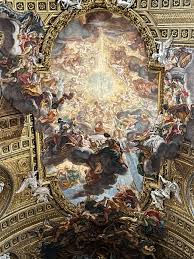
The Church of Gesù, including Triumph of the Name of Jesus Ceiling Fresco Gesu is Mother Church Giovanni Battista Gauli Giacomo da Vignola & Giacomo Della Saint Ignatius of Loyola, the founder of the new-found Jesuit religion, needed a church to serve as the religion’s center scared into believing
Form:
Brick, marble, stucco, fresco; single nave with side chapels
Dramatic ceiling illusionism by Gaulli (Triumph of the Name of Jesus)
Content:
Ceiling shows angels and sinners swirling toward divine light (IHS monogram)
Unified architecture, sculpture, and painting
Single aisle church
Has side chapels
Church is in a cruciform plan ( the transept is not that long)
Dark interior
Function:
Mother church of the Jesuit Order; inspire faith and awe through emotion
Historical Context:
Rome, 16th–17th centuries (Vignola & della Porta architects, Gaulli fresco c. 1676–1679)
Counter-Reformation art emphasizing drama and devotion
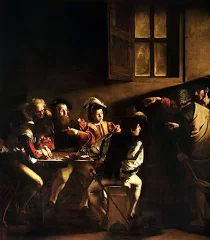
The Calling of Saint Matthew (Caravaggio)
Form:
Oil on canvas; intense chiaroscuro and naturalism
Tenebrist lighting highlights spiritual revelation
Content:
Christ points to Matthew (a tax collector), calling him to discipleship
Realistic figures in contemporary clothing
Jesus christ seen pointing at Matthew (replicating the hand of Adam in Michelangelo’s Creation of Adam)
Peter’s pointing is slightly more assertive than Christ’s
Function:
Inspire personal conversion and faith; Counter-Reformation emphasis on divine grace
Historical Context:
Rome, c. 1597–1601 CE
Italian Baroque—Caravaggio revolutionized art with realism and dramatic light
Jesus Christ called a tax collector to become a disciple
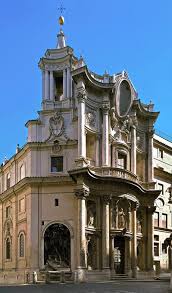
San Carlo alle Quattro Fontane (Borromini)
Form:
Stone; undulating façade, oval dome with geometric coffers
Dynamic curves and white interior create movement
Content:
Complex geometry; ovals and circles symbolize divine perfection
Function:
Small church for Trinitarian order
Historical Context:
Rome, 1638–1646 CE
Borromini’s innovative architecture embodied Baroque emotion and complexity
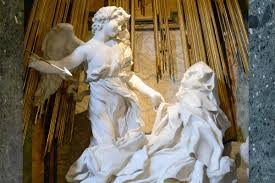
Ecstasy of Saint Teresa (Bernini)
Form:
Marble, stucco, and gilt bronze; theatrical light and motion
Sculptural group within architectural setting
Content:
Saint Teresa pierced by angel’s arrow—spiritual and physical ecstasy
Naturalistic folds and emotional intensity
Function:
Inspire faith through sensory and emotional experience
Historical Context:
Cornaro Chapel, Rome, 1647–1652 CE
Bernini merged sculpture, architecture, and theater—key Baroque masterpiece
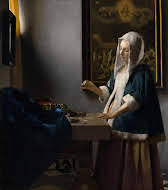
Woman Holding a Balance (Vermeer)
Form:
Oil on canvas; quiet interior scene with balanced composition and soft light
Subtle use of perspective and symbolism
Content:
Woman weighs valuables before a Last Judgment painting
Symbolizes spiritual balance and moral choice
Function:
Genre scene with moral message about moderation and virtue
Historical Context:
Netherlands, c. 1664 CE
Dutch Baroque—emphasis on everyday life and moral reflection
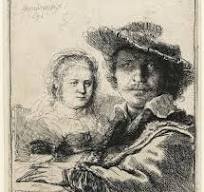
Self-Portrait with Saskia (Rembrandt)
Form:
Etching; fine linework, light and shadow for depth
Intimate composition of artist and wife
Content:
Rembrandt with his wife Saskia; informal, personal image
Function:
Experiment in self-portraiture; showcase identity and printmaking skill
Historical Context:
Netherlands, 1636 CE
Dutch Baroque—rise of middle-class patronage and self-representation
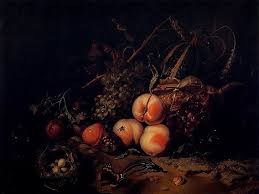
Fruit and Insects (Rachel Ruysch)
Form:
Oil on wood; precise realism, balanced composition
Careful observation of natural detail
Content:
Still life of fruit, wheat, and insects—symbolizing seasons and abundance
Function:
Showcase wealth, beauty of nature, and vanitas themes
Historical Context:
Netherlands, 1711 CE
Female artist during Dutch Golden Age; scientific interest in nature
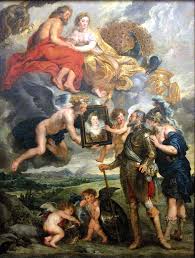
Henri IV Receives the Portrait of Marie de’ Medici (Rubens)
Form:
Oil on canvas; dynamic composition, glowing color, swirling movement
Content:
Henry IV gazes at Marie’s portrait; gods celebrate the match
Mix of mythological and political imagery
Function:
Glorify Marie de’ Medici’s political power and marriage
Historical Context:
Flanders, 1621–1625 CE
Commissioned by Marie de’ Medici; Flemish Baroque propaganda
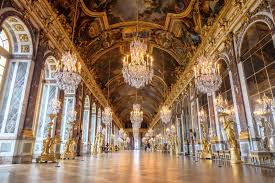
The Palace at Versailles
Form:
Masonry, stone, gold, gardens, sculpture; axial symmetry
Lavish interior with Hall of Mirrors
Content:
Architecture and gardens expressing absolute monarchy
Function:
Royal residence; symbol of Louis XIV’s power and divine right
Historical Context:
Versailles, France, 1669 CE, architects Le Vau & Hardouin-Mansart
French Baroque grandeur and control
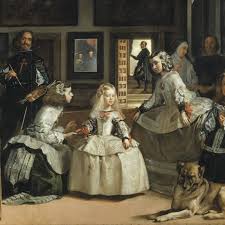
Las Meninas (Diego Velázquez)
Form:
Oil on canvas; complex spatial composition and lighting
Naturalistic realism combined with self-reference
Content:
Infanta Margarita surrounded by attendants, painter includes himself
Reflection of king and queen in mirror
Function:
Elevate painting and the artist’s status
Historical Context:
Madrid, 1656 CE
Spanish Baroque masterpiece exploring reality and illusion
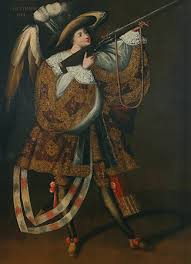
Angel with Arquebus (Asiel Timor Dei)
Form:
Oil on canvas; Andean Baroque style mixing European and indigenous motifs
Elaborate costume with metallic detailing
Content:
Angel holding a gun (arquebus); blend of religion and military imagery
Function:
Reinforce Catholic faith and divine protection in the Americas
Historical Context:
Peru (La Paz School), c. 17th century
Spanish Colonial art merging Christian and Andean traditions
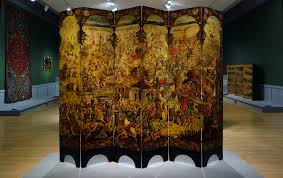
Screen with Siege of Belgrade and Hunting Scene
Form:
Tempera and resin on wood; folding screen with Japanese biombo influence
Shell inlay (enconchado technique)
Content:
One side: Habsburg battle; other side: leisure hunting scene
Function:
Decorative piece dividing space in a viceroy’s palace
Historical Context:
Mexico, 1697–1701 CE
Commissioned for the Mexican viceroy; reflects global trade and cultural fusion
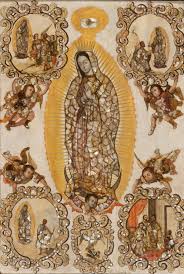
La Virgen de Guadalupe (Miguel González)
Form:
Oil on canvas with mother-of-pearl inlay (enconchado)
Luminous surface and symbolic imagery
Content:
Virgin of Guadalupe surrounded by Marian imagery and miracles
Function:
Promote devotion; symbol of Mexican identity and faith
Historical Context:
Mexico, c. 1698 CE
Colonial religious art blending European and indigenous traditions
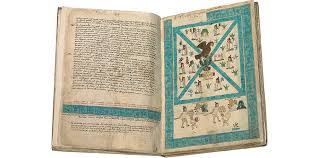
Frontispiece of the Codex Mendoza
Form:
Ink and color on paper; Aztec pictograms with Spanish annotations
Content:
Founding of Tenochtitlán; tribute lists; Aztec rulers
Function:
Record Aztec history for Spanish authorities
Historical Context:
Mexico City, 1541–1542 CE
Made after conquest to inform the Spanish crown about Aztec culture
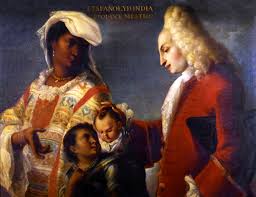
Spaniard and Indian Produce a Mestizo
Form:
Oil on canvas; soft color and balanced composition
Part of casta painting tradition
Content:
Spanish father, indigenous mother, and their mixed-race child
Function:
Illustrate racial hierarchy in colonial New Spain
Historical Context:
Mexico, c. 1715 CE
Reflects Enlightenment interest in taxonomy and colonial racial order